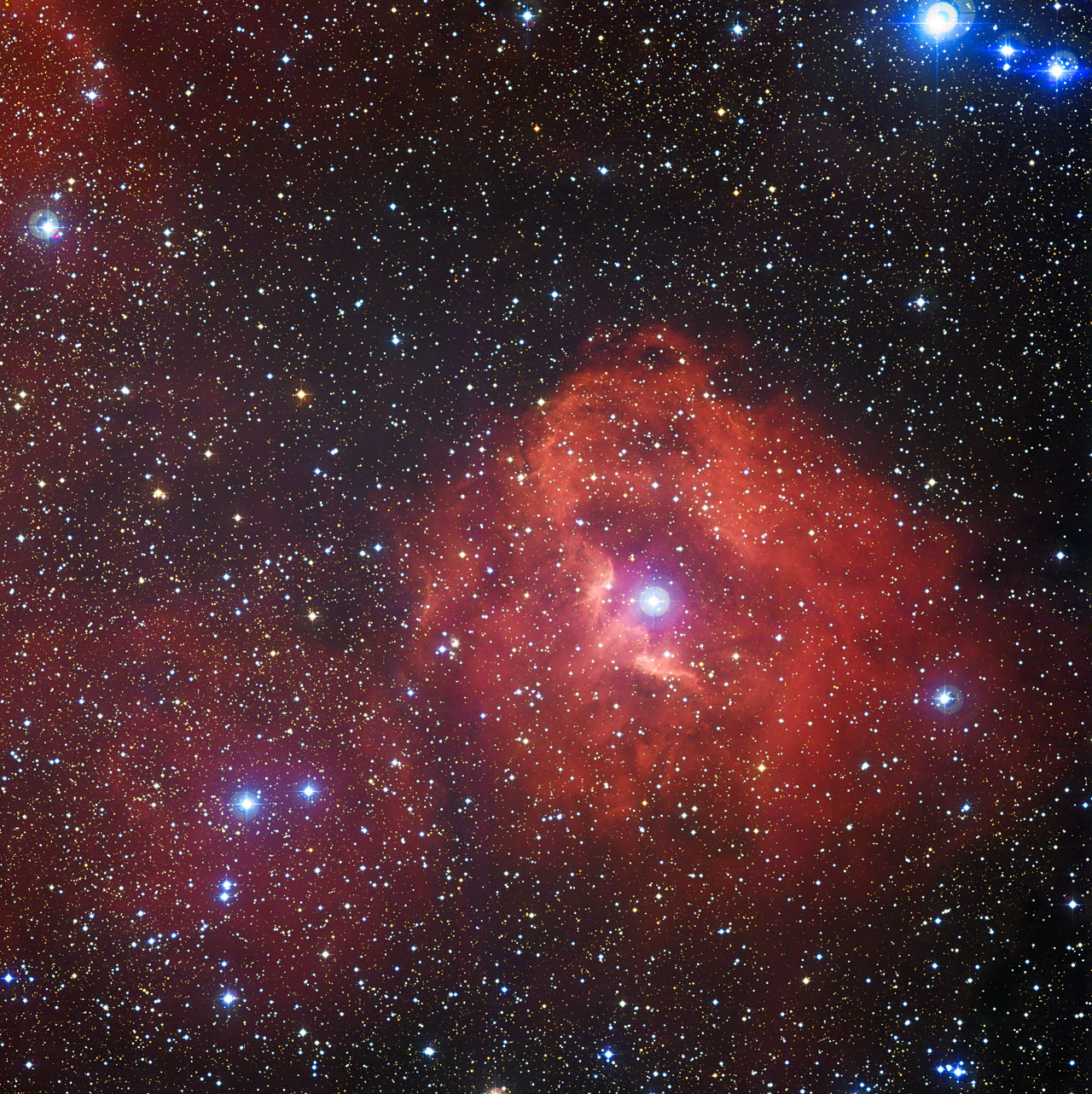Rosy Cosmic Cloud Glows with Stars in New Telescope View (Video, Photo)

A distant group of hot, young stars cause a cloud of hydrogen gas to glow a rosy red 7,300 light-years from Earth in the latest amazing view from a telescope in Chile.
Called Gum 41, the cloud stars in a new photo released by the European Southern Observatory today (April 16). Radiation emitted by the newborn stars near the middle of the image gives the hydrogen a rosy glow, ESO officials said. You can explore the new nebula photo in a video produced by ESO.
"In this picture of Gum 41, the clouds appear to be quite thick and bright, but this is actually misleading," ESO officials said in a statement. "If a hypothetical human space traveller could pass through this nebula, it is likely that they would not notice it as — even at close quarters — it would be too faint for the human eye to see." [Strange Nebula Shapes: What Do You See? (Gallery)]
The red glow of the nebula is not easy to see visibly, ESO officials added.
Gum 41's faint appearance could explain why the object wasn't discovered until the 20th century. Australian astronomer Colin Gum discovered Gum 41 — which is actually part of the larger Lambda Centauri Nebula (also called the Running Chicken Nebula. He published his findings in 1955, ESO officials said.
Gum 41 is located in the constellation Centaurus, The Centaur. This area of the sky plays host to many bright nebulas associated with brand new stars forming from clouds of hydrogen, according to ESO.
And Gum 41 isn't the only glowing red cloud in deep space.
Breaking space news, the latest updates on rocket launches, skywatching events and more!
"Another famous example of this phenomenon is the Lagoon Nebula, a vast cloud that glows in similar bright shades of scarlet," ESO officials said in a statement.
A telescope at the La Silla Observatory in Chile captured the new photo of Gum 41. The observatory is run by ESO, an intergovernmental astronomy organization supported by 15 countries in Europe and South America.
Follow Miriam Kramer @mirikramer and Google+. Follow us @Spacedotcom, Facebook and Google+. Original article on Space.com.

Miriam Kramer joined Space.com as a Staff Writer in December 2012. Since then, she has floated in weightlessness on a zero-gravity flight, felt the pull of 4-Gs in a trainer aircraft and watched rockets soar into space from Florida and Virginia. She also served as Space.com's lead space entertainment reporter, and enjoys all aspects of space news, astronomy and commercial spaceflight. Miriam has also presented space stories during live interviews with Fox News and other TV and radio outlets. She originally hails from Knoxville, Tennessee where she and her family would take trips to dark spots on the outskirts of town to watch meteor showers every year. She loves to travel and one day hopes to see the northern lights in person. Miriam is currently a space reporter with Axios, writing the Axios Space newsletter. You can follow Miriam on Twitter.
